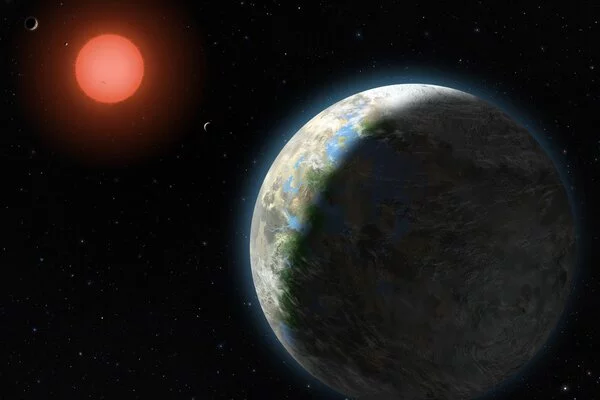An exoplanet is a planet that orbits another star outside of our solar system. They are also known as “extrasolar planets,” with the prefix “extra-” implying that they are located outside of our solar system.
When we consider finding life beyond Earth, particularly on exoplanets, we immediately want to find the next Earth, or Earth 2.0. We want an exoplanet that orbits a star in its habitable zone (HZ), with vast oceans of liquid water and plenty of land. That kind of exoplanet has to have life, right? However, what if we’re looking in the wrong places? What if we discover life on exoplanets that lack the aforementioned characteristics, such as Earth 2.0?
This is because some exoplanets have been observed to orbit their parent stars in strange orbits known as highly eccentric orbits, which means noncircular orbits. Eccentricity is measured on a scale of 0 to 1, with 0 representing a perfectly circular orbit and 1 representing an extremely elongated orbit in which the length of the orbit is far greater than its width. This also means that a highly eccentric exoplanet travels in and out of the HZ throughout its orbit, which may or may not bode well for the discovery of life on these worlds. All things considered, could highly eccentric exoplanets potentially harbor life?
Exploring climates for planets in highly eccentric orbits is all about understanding the robustness of planetary climates to dramatic changes in the energy received at the top of the atmosphere.
Dr. Stephen Kane
“I certainly think it is a possibility,” said Dr. Tyler Robinson, who is an assistant professor in the Department of Astronomy and Planetary Science at Northern Arizona University, and an expert in planetary and exoplanetary atmospheres. “Like so many things, though, the perceived likelihood of harboring life will depend on key details. Just how eccentric? How quickly does the planet rotate for its day/night cycle? An atmosphere and oceans provide some buffer against heating and cooling events, but these protections could start to break down if a planet is receiving too much solar energy input.”
Within our own solar system, all of the planets have largely circular orbits with eccentricities close to zero, with Earth having an eccentricity of about 0.02 and Mercury having the highest eccentricity at 0.2. While eccentricity does not determine a planet’s habitability, it does play a role on Jupiter’s Galilean moons: Io, Europa, Ganymede, and Callisto, with the first two exhibiting active geology due to their constant tugging and stretching by Jupiter’s immense gravity, while also tugging on each other. What can highly eccentric exoplanets teach us about finding life beyond Earth, given that we don’t observe highly eccentric orbits in our own solar system?

“Exploring climates for planets in highly eccentric orbits is all about understanding the robustness of planetary climates to dramatic changes in the energy received at the top of the atmosphere,” said Dr. Stephen Kane, a Professor of Planetary Astrophysics in the Department of Earth and Planetary Sciences at UC Riverside.
“Although planetary orbits in the solar system are mostly circular, there are many eccentric orbits in other planetary systems. If those planets can maintain habitable conditions for at least a large portion of their orbits, it could greatly expand the locations where life is possible.”
Dr. Kane is interested in multiple highly eccentric exoplanetary systems, saying he is a “big fan” of the Kepler-1649 system. This is due to the system possessing both an Earth and Venus analog that he says can be used to compare directly to our own solar system, and he was the lead author on a study published in The Astrophysical Journal in 2021 about Kepler-1649. He is also interested in potentially habitable moons orbiting highly eccentric exoplanets, noting that WASP-47c travels both in and out of the HZ.
Where will we find life after we leave Earth? Will it be discovered on Earth 2.0, a highly eccentric exoplanet, or one of its moons? Exoplanetary systems have already shown that very few solar systems mirror our own, so as the search for life beyond Earth intensifies, so will the locations where we might be able to find it.
Dr. Robinson stated, “Highly eccentric exoplanets have the potential to teach us about the importance of cycling in the origin of life. Some have proposed that daily cycles of heating and cooling, wave cycles on a beach, or the monthly cycle of tides were important for the origins of life on our planet. Perhaps a more extreme annual cycle of seasons could then aid in the origin of life. Or maybe not.”
















